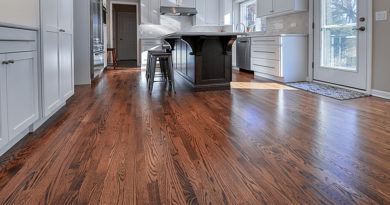MARBLE FLOORING | An Architect Explains
Marble is a very attractive, elegant and popular option for flooring as it gives a sophisticated look to a room. Like Granite, it has been the material of choice for houses by designers and architects throughout history. But Marble cannot be used in kitchens since it stains easily and in bathrooms because it is slippery when wet.

Marble has both advantages and disadvantages. It is useful to know the characteristics of Marble, its usability and suitability as a flooring option. As an Architect, I have described Marble along with it’s features under the following headings so that you can decide whether it is suited for your requirement and your space:
What are the characteristics of Marble?
What are the advantages of Marble flooring?
What are the disadvantages of Marble flooring?
Where is Marble flooring best suited?
WHAT ARE THE CHARACTERISTICS OF MARBLE?
- Origin: Marble is a natural stone product obtained from quarries, therefore it is completely biodegradable and eco-friendly.
- Composition: Marble is chemically a limestone, (a combination of calcite and calcium carbonate) and a base in an acid-base relationship. If acidic substances such as fruit products, juices, sodas, vinegar etc fall on untreated marble floor, they will cause a chemical reaction and permanent discoloration/stains. To protect the marble, regular sealing should be done.
- Physical Characteristics: Marble is hard, smooth, heavy and durable. It has a tight crystalline structure which can take very high polish.

WHAT ARE THE ADVANTAGES OF MARBLE FLOORING?
- Beautiful, timeless: and will always look as elegant as the day it was installed.
- Natural Grains: Being a naturally occurring material, Marble has unique grain movement and flowing veins that give it a life of its own, making it the most compelling reason to use it instead of man-made material like terrazzo, ceramic/vitrified tiles.
- Durable: and long lasting. It can be polished any number of times without it fading.
- Easy to maintain: because of it’s highly polished surface.
- Cool: Marble has an inherent ability to reflect heat and is always cool and comfortable underfoot.
- Seamless flooring: Marble is available as big slabs of sizes 4’x2′ to 9’x4′ and can be laid with paper thin joints to create a seamless floor.
- Paper thin joints: prevent dust accumulation and fungal formations making it easy-maintenance.
- Wide range: of colours and polish are available to suit any purpose and taste.
- Inlay work: with other coloured marble strips is a unique advantage of Marble flooring.

WHAT ARE THE DISADVANTAGES OF MARBLE FLOORING?
- Expensive: Marble flooring is very expensive.
- Scratches: Compared to Granite, Marble has a lower abrasion resistance and so takes scratches.
- Porous: Because of it’s porosity, Marble is not water resistant.
- Discoloration: Marble stains easily and gets discoloured by acidic substances. It may yellow over time if it is of inferior quality.
- Quality: is just a matter of chance as it is a naturally occurring material. Low quality marble develops cracks easily.
- Time consuming: Marble needs 48 to 76 hours to set before it can be polished and polishing on site is generally a time-consuming and messy affair. Also it needs sealing.
- Very cold: under feet in winter.
- Care in cleaning: Marble flooring needs regular cleaning to maintain its shine.

HOW SHOULD MARBLE BE MAINTAINED?
The shine on marble flooring is maintained by regular mopping with a mild detergent and water. Instead of using costly specialty cleaners or regular floor wax, make a homemade paste of baking soda and water and apply it to the floor. Then using a clean cloth wipe away the baking soda paste using a circular motion. Lastly, buff the floor with a dry cloth to achieve a waxy shine.
WHERE IS MARBLE FLOORING BEST SUITED?
Marble being beautiful, elegant, natural and seamless, is preferred in homes, as back splashes and in bathroom countertops. However, since it is not very stain resistant and is slippery, it is not used in Kitchens and bathrooms. An alternative, luxurious stone that can be used is Granite. Eco-friendly and cheaper options are Kota stone flooring or Slate flooring.
For information on other flooring options, go to:
- Flooring | Natural Material Options
- Flooring | Man-made Material Options
- Flooring | Resilient Material Options
READ MORE:
In order to get a rough idea of the suitability of a particular flooring for your requirement and to make a fair comparison of the different types of flooring, refer to an Architect’s rating of the various kinds of flooring on my blog: House construction in India
If you found this post useful, all it takes is a simple click on the “pin it” “like,” “share,” “tweet,” or Google+ buttons below the post. Thank you!




